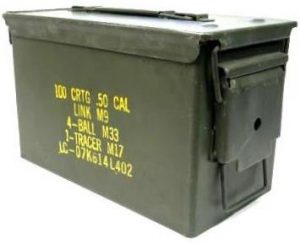I’ve seen a few posts recently about setting up food caches for backpacking.
There are a few reasons why people may want caches for backpacking:
- Don’t want to hitch into town as to prolong the wilderness feel and/or not feeling comfortable with hitching
- In a remote area, easier to have food and other supplies waiting for you
- Convenience while on the trail in general. No need to spend time in town to pick up supplies. Everything is there.
Caches were often used in the past for resupplies. Even along the Appalachian Trail and when the backpacking infrastructure was not as convenient as today.
I know of people who have done caches along the American Discovery Trail, the Hayduke Trail, The Colorado Trail and even some largely self-made routes that definitely lack a ready-made backpacking infrastructure.
Caches may not work for most people, but they are an option people are interested in using for different reasons. For anything off the beaten path, caches can be a good way to go.
One couple I met was able to procure many bear canisters from friends and place them at strategic spots along The Colorado Trail for their resupply caches.
But what if you can’t corral multiple bear canisters? For trips with a large amount of caches or even one large cache, procuring and placing multiple bear canisters may not be feasible.

.50 caliber ammo box. From eBay
The answer?
Military surplus ammo boxes. Commonly found for sale in eBay surplus stores, these boxes come in various sizes, make a weather resistant seal, are durable and are inexpensive.
The most versatile size seems to be the .50 caliber boxes. With shipping and handling included, these boxes are about $20 each.
How effective are these ammo boxes? They’ve been used for years in NPS, USFS and BLM units for critter protection. Suitably modified, they are even allowed in Denali for food storage in grizzly bear country. I’ve used them myself in designated National Park sites. I also saw a presentation at Neptune Mountaineering where the two hikers used metal ammo boxes for their trek on The Colorado Trail.
Basically, ammo boxes work.
Caches have two significant downsides:
- You have to drive to drop them off and then drive back to pick them up. You just can’t leave the caches behind. Makes pre- and post trek logistics more difficult.
- Not all land agencies allow caches. Call ahead to be sure.
Assuming a cache is allowed, and it is an option you wish to use, the following steps are used for caching:
- Have it in an out-of-the-way spot and hidden. Right on or next to the trail would not be appropriate. Some people bury the cache if they expect any curious people to wander by…
- Have it clearly signed whose cache it is, the date when you dropped the cache off and the approximate date when you expect to pick the cache up (more so if not buried).
- Don’t forget where you place your cache! 🙂 Seriously, have very good notes, perhaps even GPS coordinates, of where your resupply was kept.
- And, critical, RETRIEVE YOUR CACHE WHEN YOU ARE DONE WITH THE TRIP.
Some more specific information may be found on Buck Nelson’s site, too.
If you need to do your resupply caches, consider the inexpensive, reliable and well-tested surplus ammo boxes. They work. And they have worked for many people.

I’ve kicking around the idea of walking the Lone Star Trail next fall and thought a cache in the middle was the most feasible resupply option. This post makes me feel less crazy about this idea as I couldn’t find anyone else. Thanks!
Awesome. Glad I could help!